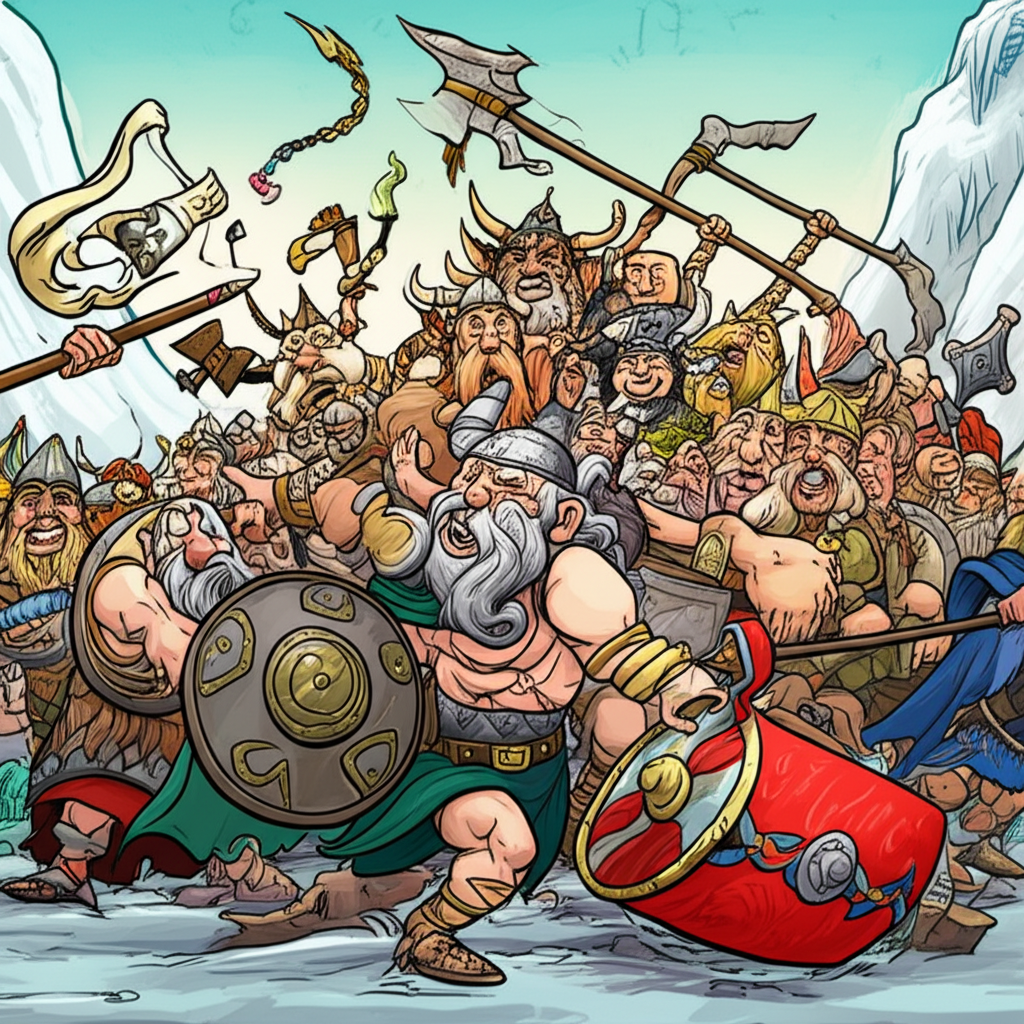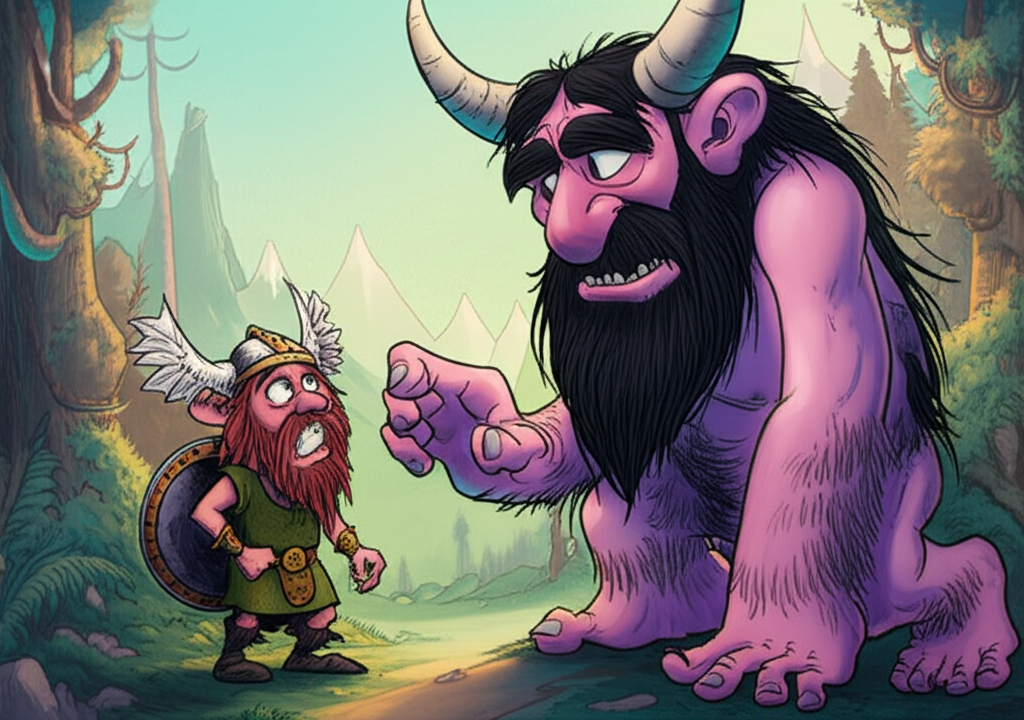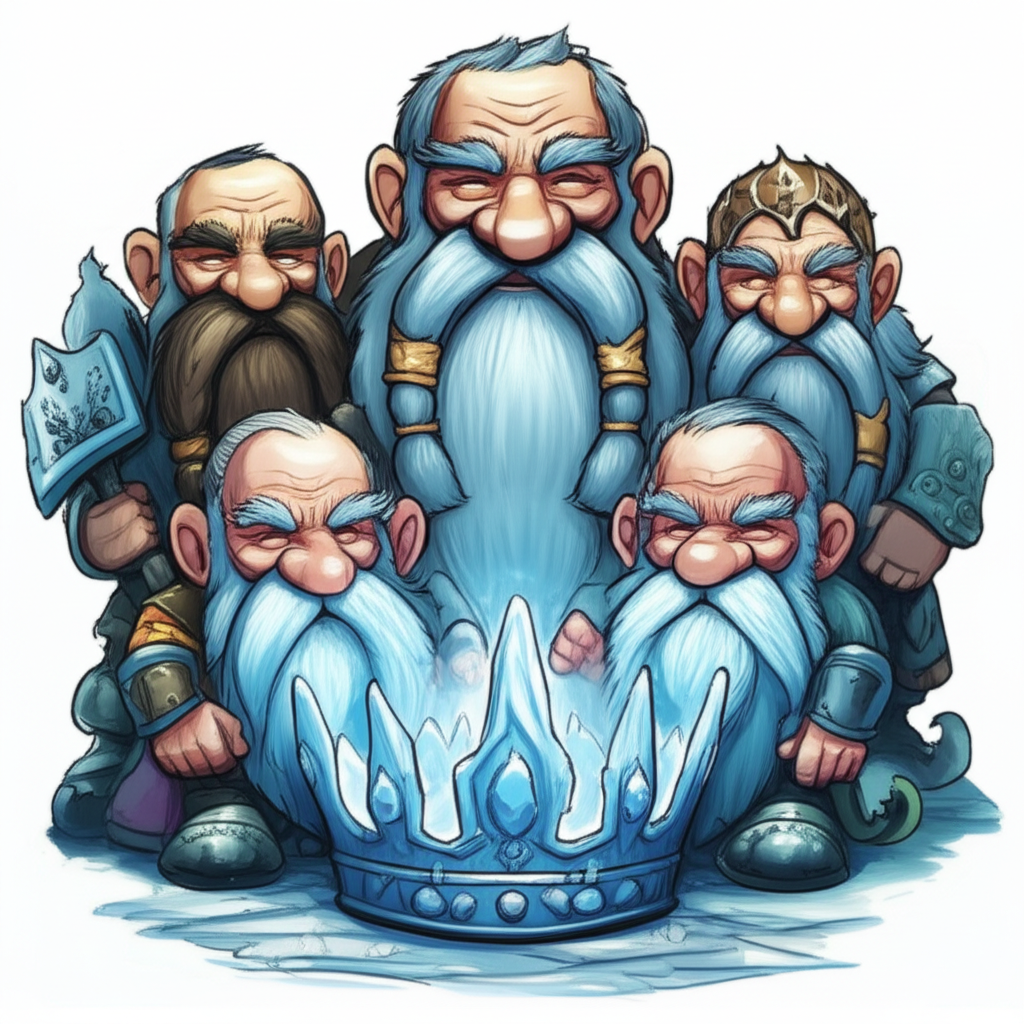
The tapestry of ancient Norse mythology is woven with tales of gods, giants, and the very fabric of existence. Among these compelling narratives, the conflict between the Aesir and the Vanir stands as a foundational myth, a story that, in its retelling, hints at the origins of one of the most chilling realms in their cosmology: Niflheim. This intricate saga, passed down through generations of Scandinavians, offers a window into the worldview and values of a people deeply connected to the natural world and the forces they believed shaped it.
Origins and Cultural Context: A Land Forged in Frost and Fire
The myths of the Norse people emerged from the rugged landscapes of Scandinavia, a region characterized by harsh winters, vast forests, and the ever-present power of the sea. During the Viking Age and the preceding centuries, when these stories were most vibrantly shared, life was a constant negotiation with nature. The sun’s fickle warmth, the ferocity of storms, the bounty and danger of the wilderness – all these elements were perceived as manifestations of powerful, unseen forces.
In this environment, the Norse worldview was one of duality and perpetual struggle. The world was not a place of static harmony but a dynamic arena where opposing forces, often personified by divine beings and monstrous entities, were in constant tension. Order and chaos, creation and destruction, light and darkness – these were not abstract concepts but tangible realities that dictated the rhythm of life. The gods, while powerful, were not omnipotent creators in the Abrahamic sense; rather, they were formidable beings who actively shaped and defended their realm, often through conflict and sacrifice. Their stories were not divine commandments but cautionary tales, explanations for the inexplicable, and explorations of fundamental human anxieties and aspirations.
The Divine Divides: Aesir and Vanir
At the heart of this myth lie two distinct pantheons of deities: the Aesir and the Vanir.
The Aesir were primarily associated with power, war, wisdom, and the sky. Their king, Odin, was the All-Father, a god of immense knowledge, often gained through sacrifice, and a patron of warriors and poets. Thor, the thunder god, embodied strength and protection, wielding his mighty hammer Mjölnir to defend Asgard and Midgard from monstrous threats. Tyr represented justice and courage, famously sacrificing his hand to bind the wolf Fenrir. The Aesir were often depicted as the more martial and authoritative of the divine groups, residing in the majestic fortress of Asgard. Their symbolism often revolved around strength, authority, and the defense of cosmic order.
The Vanir, in contrast, were more closely linked to fertility, prosperity, wealth, and the earth’s bounty. Freyja, a goddess of love, beauty, and magic, also held sway over wealth and was a formidable sorceress. Her brother, Freyr, was a god of peace, fertility, and good harvest, often depicted with a phallic symbol representing his generative power. Njord, the father of Freyr and Freyja, was a god of the sea, wind, and wealth, whose blessings were crucial for seafaring and commerce. The Vanir were often seen as more intrinsically connected to the natural cycles of growth and abundance, their symbolism leaning towards prosperity, peace, and the earth’s generative forces.
The Seeds of Discord: A Narrative of War and Reconciliation
The Aesir-Vanir War, as recounted in the ancient Eddas, did not begin with a grand ideological schism but with a perceived transgression. The specifics vary in different retellings, but a common thread involves the Vanir practicing a form of magic, often referred to as seiðr, which the Aesir viewed with suspicion and even fear. This magic was associated with divination, manipulation, and the ability to influence the fate of mortals and gods alike. Some accounts suggest the Vanir’s mastery of seiðr was so potent that it unnerved the more pragmatic Aesir.
One pivotal incident involved the Aesir’s attempt to capture or subdue a powerful Vanir sorceress, Gullveig. The Aesir, viewing her magic as dangerous and disruptive, subjected her to repeated torments and immolations. However, Gullveig, embodying the resilient and potent magic of the Vanir, refused to die. Each time she was burned, she rose again, more powerful and more cunning. This act of defiance, repeated thrice, ignited the wrath of the Vanir, who saw their kin subjected to barbarous treatment.
The war that ensued was brutal and devastating. Both sides possessed formidable warriors and divine powers. The Aesir, with their focus on warfare and strategy, clashed with the Vanir, whose magic and connection to the earth provided them with unique advantages. Battles raged across the cosmic realms, shaking the foundations of existence. It is said that Odin himself was wounded, and Thor, the mighty defender, found his strength tested against the Vanir’s potent magic.
However, the prolonged conflict proved to be a Pyrrhic victory for neither side. The sheer cost in divine lives and the disruption to the cosmic balance became apparent. Both pantheons realized that this internecine strife was weakening them all, leaving them vulnerable to the primordial giants and other chaotic forces that lurked beyond their ordered realms.
A turning point arrived when a truce was proposed. To solidify this peace and ensure future cooperation, a remarkable exchange of hostages took place. The Aesir sent two of their esteemed members, Njord and his children, Freyr and Freyja, to Asgard. In return, the Aesir sent Hoenir, a god of uncertain abilities who relied heavily on the wisdom of Mimir, and Mimir himself, to Vanaheim, the realm of the Vanir. This exchange was intended to foster understanding and integration between the two divine families.
However, the peace was not entirely without its shadows. Mimir, a wise counselor, was eventually beheaded by the Vanir, who sought to extract his knowledge. Odin, in a profound act of wisdom and sacrifice, retrieved Mimir’s head and preserved it, using its counsel to guide him. This act, while born of conflict, ultimately contributed to the Aesir’s wisdom.
The Whispers of Niflheim: A Realm Born of Sorrow and Cold
It is within the context of this devastating war, and the subsequent uneasy peace, that the mythical origins of Niflheim are often traced. While Niflheim is described as a primal realm of mist and darkness, a place of perpetual cold and gloom, its connection to the Aesir-Vanir war is subtle yet significant.
Some interpretations suggest that the immense sorrow, loss, and the chilling despair that permeated the cosmos during the war contributed to the very essence of Niflheim. The suffering of deities, the destruction wrought, and the lingering echoes of conflict could be seen as coalescing into this desolate realm. It was a place where the light of creation seemed to have receded, where the warmth of prosperity and life was extinguished.
Furthermore, Niflheim is sometimes associated with the primordial chaos that existed before the current order of the gods. The war between the Aesir and Vanir, a struggle to establish and maintain that order, could be seen as pushing the remnants of this ancient, unfettered chaos into a designated realm. Niflheim, in this view, becomes a repository for the elements that could not be integrated into the ordered cosmos, a testament to the raw, untamed forces that even the gods had to contend with.
Niflheim is also the birthplace of the icy serpent Níðhöggr, who gnaws at the roots of Yggdrasil, the world tree. This relentless destructive force, constantly undermining the structure of existence, can be seen as a symbolic representation of the unresolved tensions and the lingering darkness that the war may have inadvertently fostered.
Symbolism and Meaning: The Price of Peace and the Nature of Power
The Aesir-Vanir War, and its potential connection to Niflheim, offered profound symbolic meanings to the ancient Norse people.
- The Duality of Power: The war highlighted the distinct but complementary natures of the Aesir and Vanir. It demonstrated that true strength lay not in the dominance of one set of values over another, but in the integration and balance of different forms of power – the martial might of the Aesir and the generative fertility of the Vanir.
- The Cost of Conflict: The devastating nature of the war served as a stark reminder of the destructive potential of internal strife. It underscored the idea that even divine beings could suffer and that unchecked conflict could lead to the weakening of all.
- The Nature of Magic and Authority: The initial conflict over seiðr suggests a societal contemplation of the boundaries of power and the perception of what constitutes a threat. The Aesir’s suspicion of the Vanir’s magic could reflect anxieties about uncontrolled or unfamiliar forms of influence.
- The Origins of Cosmic Order: The eventual reconciliation and exchange of hostages represented the difficult but necessary process of forging a unified cosmic order. Niflheim, as a realm of primordial darkness and chaos, could symbolize the forces that are perpetually held at bay, the ever-present potential for disorder that necessitates vigilance and balance.
Modern Interpretations: Echoes in Popular Culture
Today, the myths of the Aesir-Vanir War and Niflheim continue to resonate in various forms of modern media. In literature, fantasy novels often draw inspiration from Norse mythology, featuring pantheons of gods with distinct domains and power struggles. Video games, such as God of War and Valheim, explore these Norse realms, depicting epic battles between deities and the chilling landscapes of realms like Niflheim, albeit with fictionalized interpretations. These adaptations often focus on the dramatic conflicts and the distinct visual aesthetics associated with the Norse gods and their domains, bringing these ancient stories to a new audience. Cultural studies scholars also examine these myths to understand ancient societal structures, religious beliefs, and the human psyche’s enduring fascination with creation, conflict, and the unknown.
Conclusion: A Story of Our Ancestors
The narrative of the Aesir-Vanir War and the shadowy origins of Niflheim is a testament to the rich imaginative landscape of the ancient Norse people. It is a story woven from their understanding of the world – its beauty, its harshness, and the powerful forces they believed shaped it. These are not literal accounts to be believed as divine truth, but rather the cultural heritage of our ancestors, expressions of their worldview, their fears, and their hopes.
As Muslims, we recognize that the sole Creator and Sustainer of the universe is Allah (SWT). Our faith teaches us to acknowledge the divine reality and to reject any association of partners with Him. These ancient myths, while culturally significant, are part of a different tradition of storytelling and belief that predates Islam.
By studying these stories, we gain a deeper appreciation for the diversity of human thought and the enduring power of narrative. They remind us that culture is a living entity, shaped by the environments and experiences of those who came before us, and that the human impulse to explain the mysteries of existence through storytelling is a timeless one. The echoes of the Aesir-Vanir War, like the chilling mists of Niflheim, serve as a reminder of the rich tapestry of human imagination and the stories that have shaped our understanding of the world.





